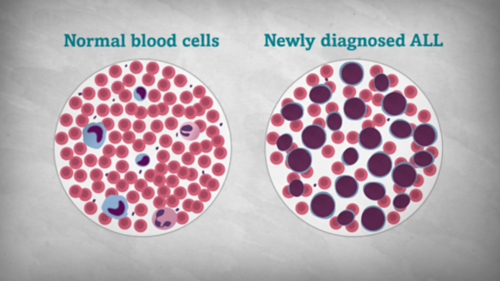
Acute lymphoblastic leukemia (ALL) is a type of cancer that affects the blood and bone marrow. It is the most common type of cancer in children, but it can also occur in adults. ALL progresses rapidly and requires immediate medical attention. Recognizing the symptoms of ALL is crucial for early detection and treatment. In this article, we will discuss the common symptoms of acute lymphoblastic leukemia and how to recognize them.
ALL symptoms can vary from person to person, and some individuals may not experience any symptoms at all. However, there are several common signs and symptoms that may indicate the presence of ALL. It is important to consult a healthcare professional for a proper diagnosis if you experience any of these symptoms.
1. Fatigue and Weakness
Fatigue and weakness are common symptoms of ALL. Patients with ALL may feel tired and exhausted even after resting or sleeping for long periods. This is due to the leukemia cells crowding out healthy blood cells, leading to anemia and a lack of oxygen in the body. If you experience persistent fatigue and weakness, it is important to seek medical attention.
2. Persistent Fever
Fevers that are persistent or recurrent can be a sign of ALL. Leukemia cells can interfere with the body’s ability to fight infections, leading to frequent fevers. If you have a fever that does not go away or keeps coming back, it is important to consult a healthcare professional for further evaluation.
3. Easy Bruising and Bleeding
Easy bruising and bleeding are common symptoms of ALL. This occurs because leukemia cells crowd out platelets, which are responsible for clotting blood. As a result, patients with ALL may experience frequent nosebleeds, bleeding gums, or easy bruising. If you notice unexplained bruising or bleeding, it is important to seek medical attention.
4. Bone and Joint Pain
Bone and joint pain can be a symptom of ALL, especially in children. Leukemia cells can accumulate in the bone marrow, leading to bone pain and discomfort. Patients may experience pain in the bones and joints, particularly in the legs. If you or your child experience unexplained bone or joint pain, it is important to consult a healthcare professional for further evaluation.
5. Swollen Lymph Nodes
Swollen lymph nodes can be a sign of ALL. Leukemia cells can accumulate in the lymph nodes, leading to their enlargement. Patients with ALL may notice swollen lymph nodes in the neck, armpits, or groin. If you notice any unexplained swelling of the lymph nodes, it is important to seek medical attention.
6. Abdominal Swelling
Abdominal swelling or distension can be a symptom of ALL, especially in children. Leukemia cells can accumulate in the liver and spleen, leading to their enlargement. This can result in a swollen or distended abdomen. If you or your child experience unexplained abdominal swelling, it is important to consult a healthcare professional for further evaluation.
7. Pale Skin
Pale skin can be a sign of anemia, which is common in ALL. Leukemia cells crowd out healthy red blood cells, leading to a lack of oxygen in the body. This can result in pale or yellowish skin, as well as generalized weakness and fatigue. If you notice persistent paleness in your skin, it is important to seek medical attention.
8. Loss of Appetite and Weight Loss
Loss of appetite and unexplained weight loss can be symptoms of ALL. Leukemia cells can interfere with the body’s ability to process nutrients, leading to a decreased appetite and unintended weight loss. If you experience persistent loss of appetite and weight loss, it is important to consult a healthcare professional for further evaluation.
9. Headaches and Vision Changes
Headaches and vision changes can be symptoms of ALL, especially in cases where leukemia cells have spread to the central nervous system. Patients may experience persistent headaches, changes in vision, or double vision. If you experience unexplained headaches or vision changes, it is important to seek medical attention.
10. Frequent Infections
Frequent or recurrent infections can be a sign of ALL. Leukemia cells can interfere with the body’s ability to fight infections, leading to an increased susceptibility to illness. Patients with ALL may experience frequent colds, flu-like symptoms, or other infections. If you experience persistent or recurrent infections, it is important to consult a healthcare professional for further evaluation.












